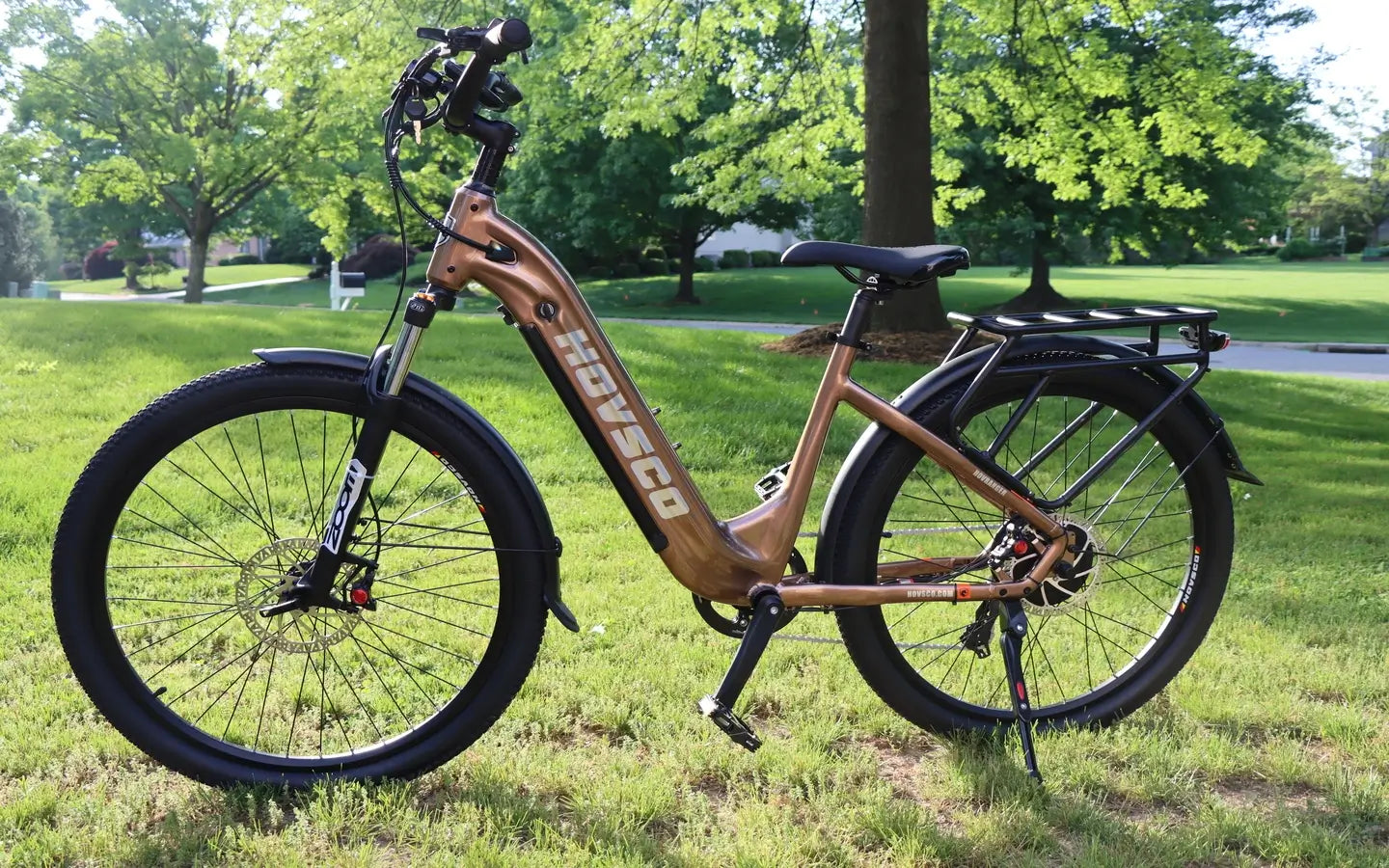
- by LiuJiazhu
What Features Ensure Cargo Bike Durability For Heavy Loads?
- by LiuJiazhu
Durable cargo bikes for heavy loads require reinforced frames, high-capacity suspension, puncture-resistant tires, hydraulic brakes, dual-battery systems, and load-optimized geometry. Steel or alloy frames with welded joints distribute weight effectively, while reinforced wheels with double-walled rims and 12-gauge spokes prevent deformation. Modular cargo racks rated for 65-200kg ensure adaptability without compromising structural integrity. What Is The Best Electric Fat Tire Bike For All-Terrain?
Cargo bike frames demand high-tensile steel or reinforced aluminum alloys with triangulated geometry to handle torsional stress. Critical weld points at head tubes and bottom brackets require robotic welding for consistent penetration depth. The Hauler model's 6061-T6 aluminum frame withstands 200kg loads through its patented truss-style down tube design.
Beyond material selection, frame geometry dictates load distribution. A 67-degree head tube angle provides stable steering under weight, while extended chainstays (550-650mm) prevent wheelies during acceleration.
Pro Tip: Look for gusset-reinforced joints where seat tubes meet top tubes—these triangular plates reduce flex by 38% in stress tests. Consider how suspension bridges use triangular supports to distribute weight— cargo bikes apply similar principles through diamond-shaped mainframes. Avoid frames with visible seam welds near load-bearing areas, as these create fracture points under repetitive stress.
| Frame Type | Max Load | Weight |
|---|---|---|
| Steel Step-Through | 170kg | 28kg |
| Aluminum Longtail | 200kg | 21kg |
| Chromoly Mid-Drive | 220kg | 25kg |
Heavy loads transfer vertical and lateral forces requiring wheels with 36-40 double-butted spokes laced in 3-cross patterns. The Hauler's 20"x4" tires use 3mm thick sidewalls and aramid breakers to resist pinch flats—critical when carrying 200kg at 32km/h. Wider 65mm rims provide better tire bead seating compared to standard 23mm road bike rims.
Wheel durability directly correlates to spoke tension uniformity. Professional builders use tensiometers to ensure 120-130kgf tension per spoke—40% higher than recreational bikes. Ever noticed how skyscraper foundations use reinforced concrete pilings? Cargo bike wheels employ analogous reinforcement through 12-gauge spokes and brass nipples that resist corrosion. A common failure point arises from using single-wall rims; these deform under loads exceeding 150kg within six months.
Pro Tip: Rotate wheels 90 degrees monthly to equalize spoke stress patterns, extending rim life by 2-3 years.
Four-piston hydraulic disc brakes with 203mm rotors provide essential stopping power, generating 1,200N of clamping force—triple the power of mechanical rim brakes. The Hauler's Tektro HD-E725 brakes maintain consistent pad contact through mineral oil systems that self-adjust for wear, crucial when descending with 200kg loads.
Brake fluid boiling points matter significantly—look for DOT 5.1 or mineral oil rated above 260°C. Mechanical brakes become dangerous under load due to cable stretch: a 5% cable elongation increases stopping distance by 3.2 meters at 25km/h. Imagine trying to stop a pickup truck with bicycle brakes—that's the equivalent mismatch when using undersized cargo bike brakes. Always pair front and rear brake levers with independent fluid reservoirs to maintain redundancy. Warning: Never mix brake fluid types—DOT fluid absorbs moisture and corrodes mineral oil systems.
Mid-drive motors with 140Nm torque ratings and thermal sensors prevent overheating during hill climbs with payloads. The Hauler's 1,400W Bafang Ultra motor employs dual Hall sensors for precise torque measurement, automatically reducing output when detecting chain stress exceeding 500N. Dual 48V 20Ah batteries provide 136km range through smart load-balancing technology.
Standard hub motors fail under cargo loads due to unsprung weight and axle torque—a 250W hub motor's nylon gears strip within 300km when regularly moving 150kg. By contrast, mid-drive systems leverage the bike's gearing: climbing a 12% grade with 200kg requires just 350W when using a 34T chainring and 42T cassette.
Pro Tip: Monitor motor temperature via Bluetooth apps—sustained operation above 85°C degrades neodymium magnets. Like diesel locomotives using gear reduction for heavy pulls, cargo bike motors prioritize torque multiplication over raw RPM.
Centering 70% of weight between axles maintains optimal balance—rear racks exceeding 55cm behind the axle amplify frame torsion by 18% per kilogram. The Hauler's 40cm deck positions cargo low over the rear wheel, lowering the center of gravity to prevent rollovers. Front loaders like the Long John require 65kg-rated baskets with triangulated support arms to handle dynamic forces during turns.
Improper loading creates dangerous lever effects: a 20kg parcel 50cm behind the rear axle exerts 100kg·cm of torque—equivalent to hanging 10kg from the seatpost. Ever tried carrying a ladder horizontally versus vertically? Cargo bikes face similar physics—long items require diagonal strapping to distribute forces. Use load cells or smart scales in cargo platforms to monitor real-time weight distribution. Warning: Exceeding front load limits stresses headset bearings, causing premature wear within 500km.
Bi-weekly drivetrain cleaning and torque checks on 36 critical fasteners prevent component fatigue. Grease injection ports on pivot bearings allow lubrication without disassembly—the Hauler features 8 Zerks fittings for high-wear joints. Annual frame inspections using dye penetrant testing reveal micro-fractures invisible to the naked eye.
Cargo bikes accumulate wear 3x faster than standard bicycles—chain stretch reaches 0.75% after just 800km under heavy loads. Replace chains at 0.5% stretch to prevent cassette damage. Consider how tractor-trailers require frequent axle inspections—similarly, cargo bike rear axles need monthly checks for bending using straightedges.
Pro Tip: Apply anti-seize compound to rack mounting bolts—salt corrosion from road spray can fuse components within six months. Always retighten spoke nipples to 4Nm after the first 160km as new wheels settle under load.
Premium models handle 200-250kg through reinforced frames and wheels, though always verify manufacturer ratings—exceeding limits voids warranties and risks structural failure.
Can regular bikes be converted for heavy cargo?No—consumer frames lack necessary reinforcements. Conversion kits often cause frame fatigue cracks within 500km—use purpose-built cargo bikes instead.
Share:
Why Adjustable Electric Bikes Are Ideal for Multiple Riders
What Maintenance Steps Ensure Electric Bike Safety With Kid Seats?